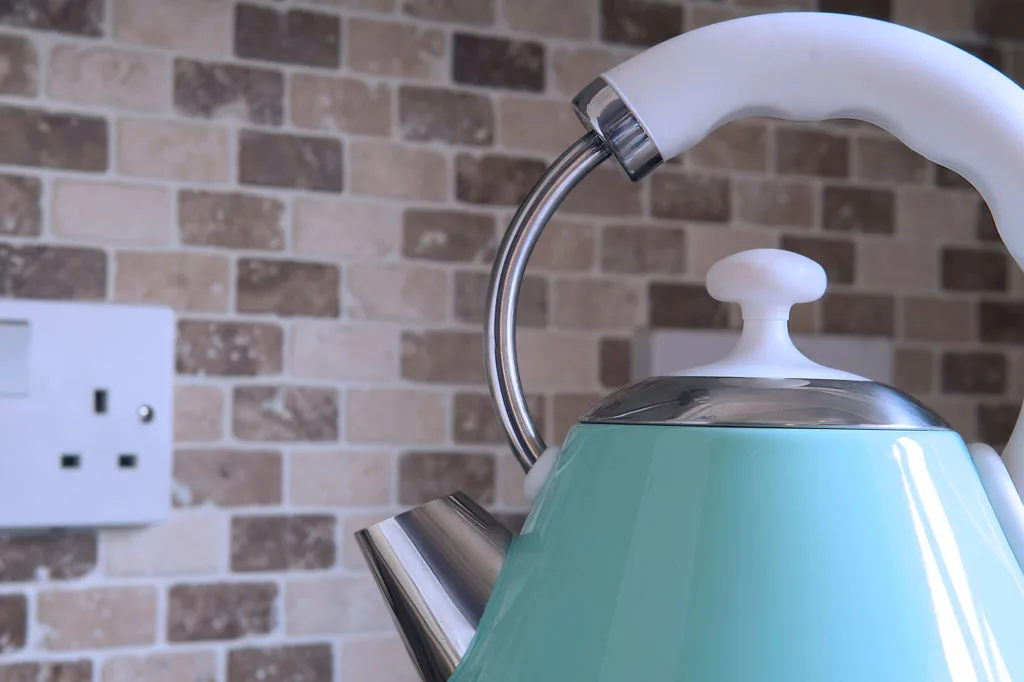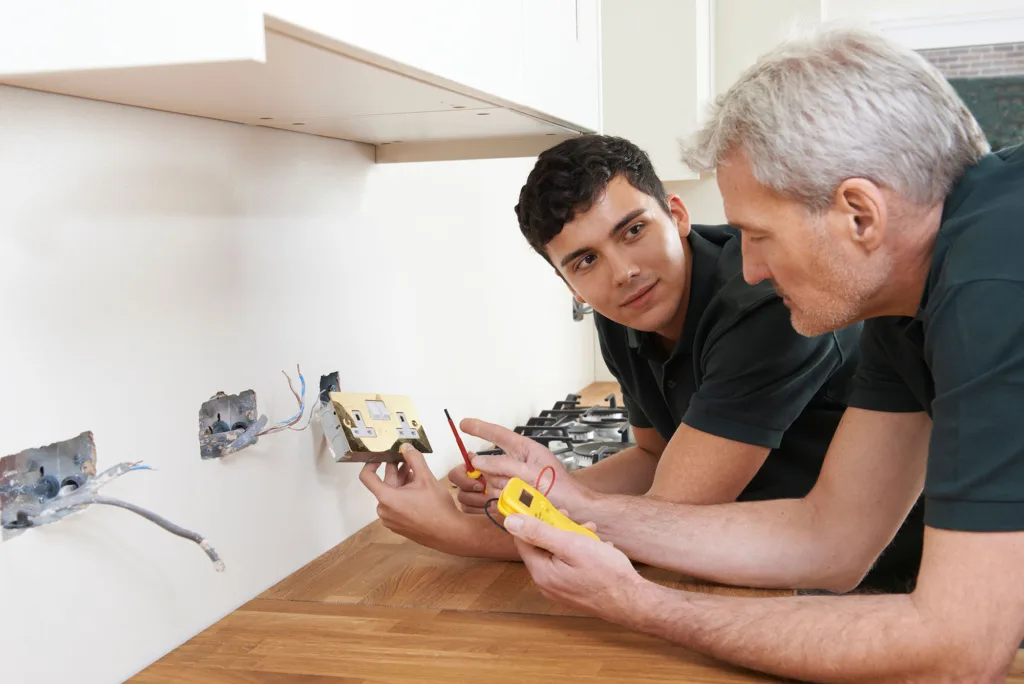Kitchen appliances are among the most power-hungry devices in a home. From kettles and microwaves to ovens and dishwashers, the electrical demand in a kitchen is far greater than in other rooms. With multiple high-wattage appliances often running simultaneously, an overloaded circuit can quickly lead to tripped breakers or, worse, electrical hazards.
Proper circuit design plays a critical role in ensuring a safe and functional kitchen. Many homeowners wonder whether kitchen sockets should be on a dedicated circuit or if they can share power with other parts of the house. The answer depends on UK electrical regulations, the specific demands of kitchen appliances, and the importance of preventing circuit overload.
This article will explore the need for dedicated kitchen circuits, compare different wiring methods, and highlight the best practices for safe and efficient electrical installations. By the end, you’ll have a clear understanding of how to power your kitchen safely while following UK regulations.
Understanding Kitchen Electrical Demands
High Power Usage in Kitchens
Kitchens are the most electrically demanding rooms in any home. Unlike living rooms or bedrooms, which mainly use lighting and low-power electronics, kitchens require heavy-duty appliances that consume significant amounts of electricity. Common kitchen appliances and their approximate power ratings include:
- Kettles: 2000–3000W
- Microwaves: 800–1200W
- Ovens: 2000–5000W
- Dishwashers: 1500–2000W
- Toasters: 800–1500W
Running multiple appliances simultaneously on a shared circuit can easily exceed its capacity, leading to frequent trips and potential overheating. This is why electrical planning in kitchens is far more important than in other areas of the home.
How Electrical Load Affects Circuit Design
Electrical circuits must be designed to handle peak loads safely. The diversity factor—a calculation that accounts for the likelihood of all appliances running at full power simultaneously—helps electricians determine the correct circuit design.
A well-planned kitchen circuit minimises the risk of overload, reduces maintenance issues, and ensures that all appliances function efficiently.
Types of Electrical Circuits in UK Homes
Ring Circuits vs. Radial Circuits
In UK homes, two main types of circuits are used:
- Ring Circuits: A looped wiring system where power flows in both directions, typically protected by a 32A breaker. Commonly used for socket outlets in general areas.
- Radial Circuits: A straight-line circuit where power flows in one direction, usually protected by a 20A breaker. Often used for dedicated kitchen appliances.
For high-power appliances such as ovens, hobs, and dishwashers, radial circuits are generally recommended. However, the decision between using a ring or radial circuit for general kitchen sockets depends on factors like load capacity and future-proofing the installation.
The Purpose of Dedicated Circuits
Certain kitchen appliances must be on their own circuit due to their high electrical demand. These include:
- Electric cookers and hobs
- Washing machines and dishwashers
- Tumble dryers
- American-style fridge freezers
For safety and efficiency, a dedicated circuit ensures that these appliances do not interfere with other electrical loads in the home.
UK Electrical Regulations for Kitchen Sockets
Wiring Regulations (BS 7671) and Kitchen Installations
The BS 7671 Wiring Regulations specify how electrical circuits should be designed in the UK. According to these regulations:
- Kitchen circuits must be RCD protected (Residual Current Devices help prevent electric shocks).
- Dedicated circuits are required for certain appliances, particularly high-wattage ones.
- Sockets must be positioned safely to avoid water hazards.
For a real-world example of a professional kitchen installation that meets these safety standards, see our kitchen installation project in Newquay.
Socket Placement and Load Distribution
The IET Wiring Regulations suggest spacing kitchen sockets based on appliance locations. Best practices include:
- Dedicated outlets for heavy-duty appliances like dishwashers and ovens.
- Even load distribution to prevent one circuit from carrying too much demand.
- Sufficient socket placement above countertops for everyday appliances.
For up-to-date information on UK wiring regulations, refer to the official IET Wiring Regulations.
Advantages of Having Kitchen Sockets on Their Own Circuit
Safety Considerations
A dedicated kitchen circuit reduces the risk of:
- Electrical overload, which can cause circuit breakers to trip frequently.
- Fire hazards due to overheated wiring.
- Voltage drops, leading to inefficient appliance performance.
Ensuring that kitchen sockets are correctly wired enhances both safety and appliance longevity.
Convenience and Efficiency
Having separate circuits means that one tripped breaker won’t cut off power to essential appliances. This is particularly useful in kitchens where multiple appliances may be in use at the same time.

Common Installation Mistakes and Best Practices
Overloading a Single Circuit
One of the most common mistakes is connecting too many sockets to a single circuit. This leads to:
- Breakers tripping when multiple appliances are used.
- Potential overheating of wiring.
- Reduced efficiency of appliances.
To avoid this, electricians must calculate the total expected load and distribute power accordingly.
Lack of Proper Earthing and RCD Protection
All kitchen circuits must be properly earthed and include RCD protection to comply with UK safety standards. This protects users from potential electric shocks and reduces the risk of fire.
Do You Need a Professional Electrician?
When to Call a Certified Electrician
In the UK, electrical work in kitchens falls under Part P of the Building Regulations. This means that most kitchen wiring jobs must be carried out or certified by a qualified electrician.
If you’re planning a kitchen refurbishment or need new sockets installed, speak to a certified professional. Contact us to ensure your installation meets safety standards.
How to Choose the Right Electrician
When hiring an electrician, look for:
- NICEIC or NAPIT accreditation.
- Experience with kitchen installations.
- A track record of compliance with BS 7671 regulations.
FAQs
Can I add more sockets to my existing kitchen circuit?
Yes, but only if the existing circuit can handle the additional load. An electrician will need to assess whether your circuit is already near capacity.
Do all kitchen appliances need a separate circuit?
Not all, but high-power appliances like ovens, hobs, and washing machines should be on their own circuit. Small countertop appliances can usually share a circuit with proper load distribution.
What is the best way to prevent electrical overload in my kitchen?
Ensure that high-wattage appliances have dedicated circuits, avoid plugging multiple heavy-duty appliances into the same socket, and always follow BS 7671 regulations.
Conclusion
Ensuring that kitchen sockets are on a suitable circuit is essential for both safety and functionality. High-power appliances require dedicated circuits, while smaller appliances should be distributed evenly across properly designed wiring layouts. Complying with BS 7671 regulations and working with a qualified electrician guarantees a safe and efficient kitchen setup.
For expert electrical services, visit Wave Electrical Solutions.










